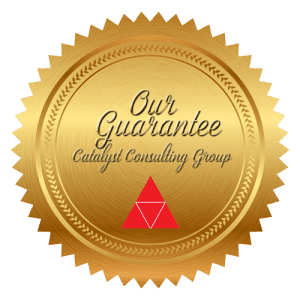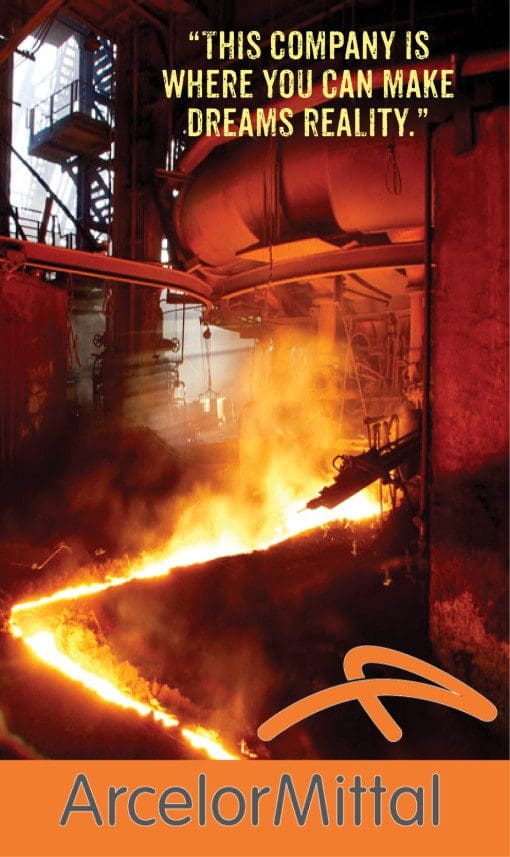
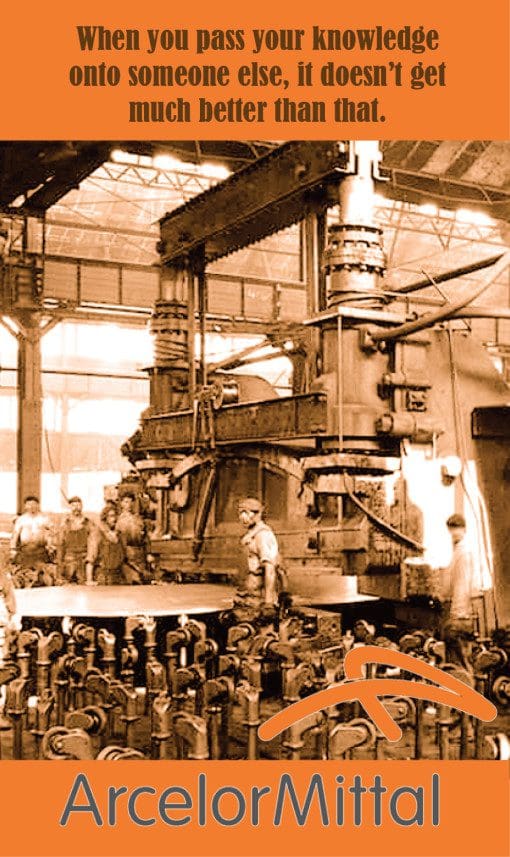
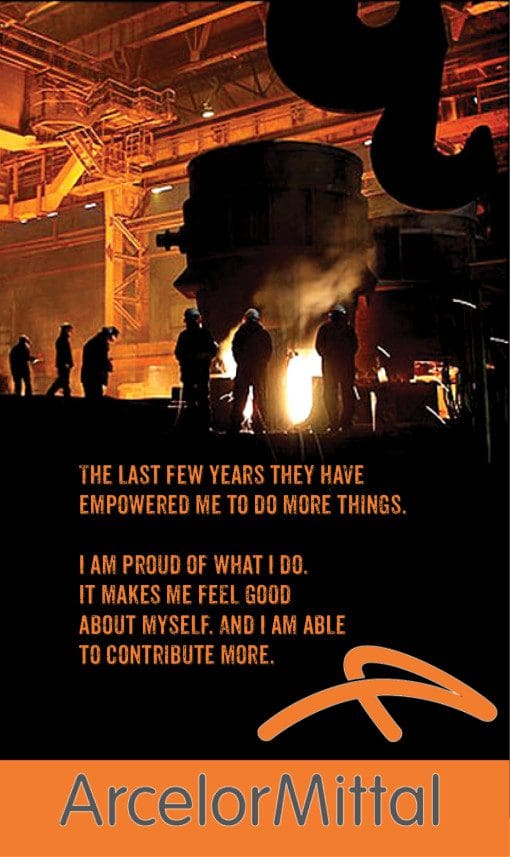
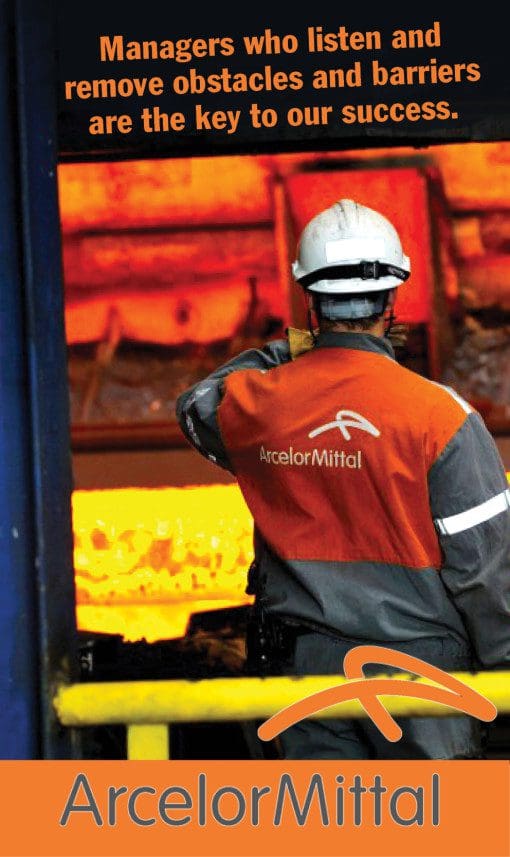
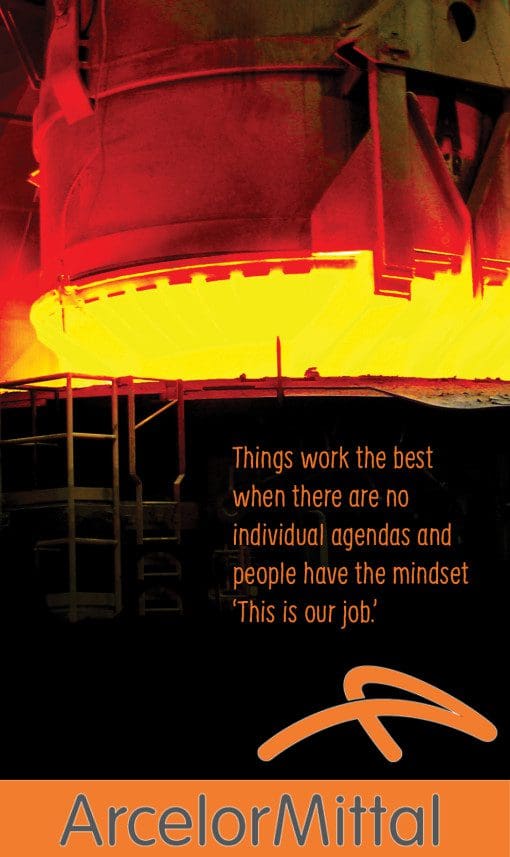
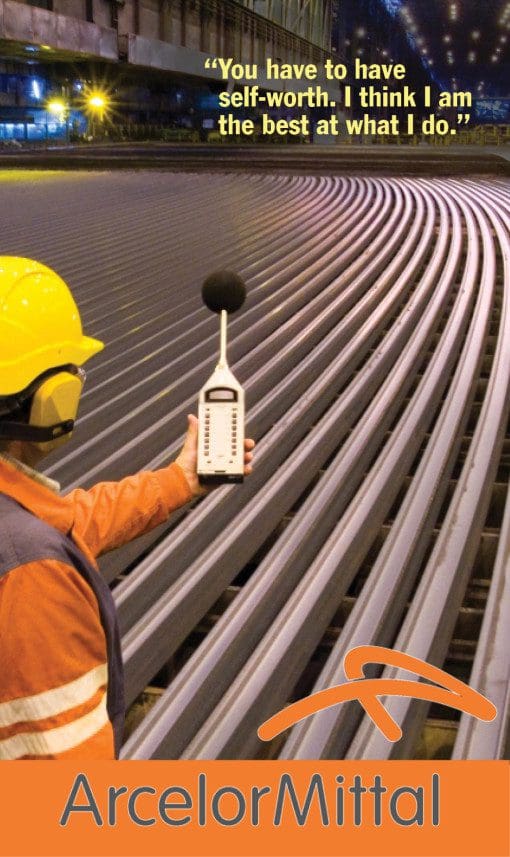
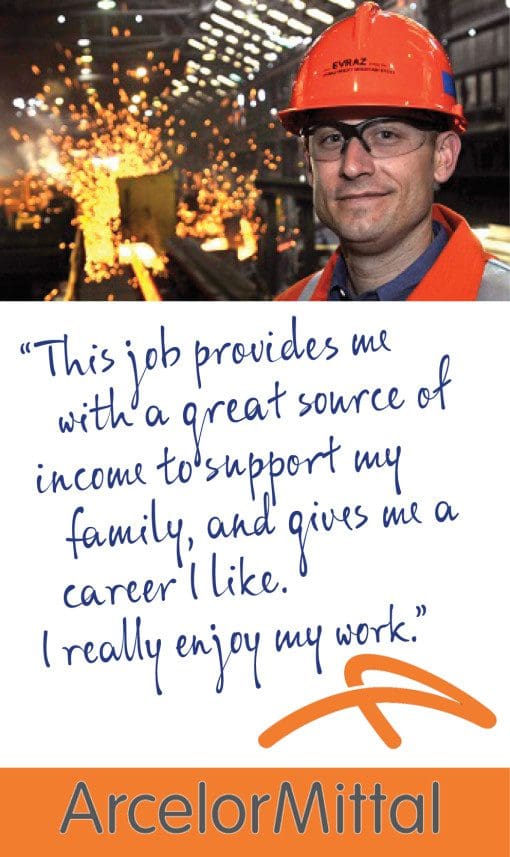
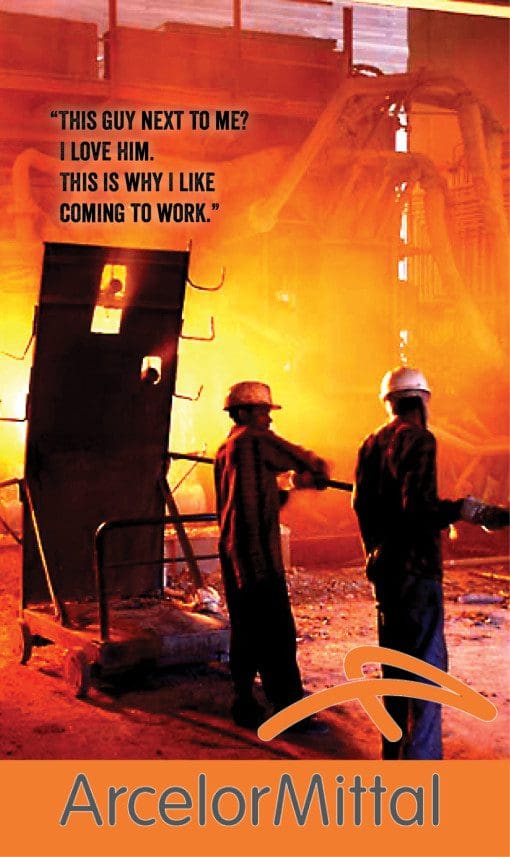
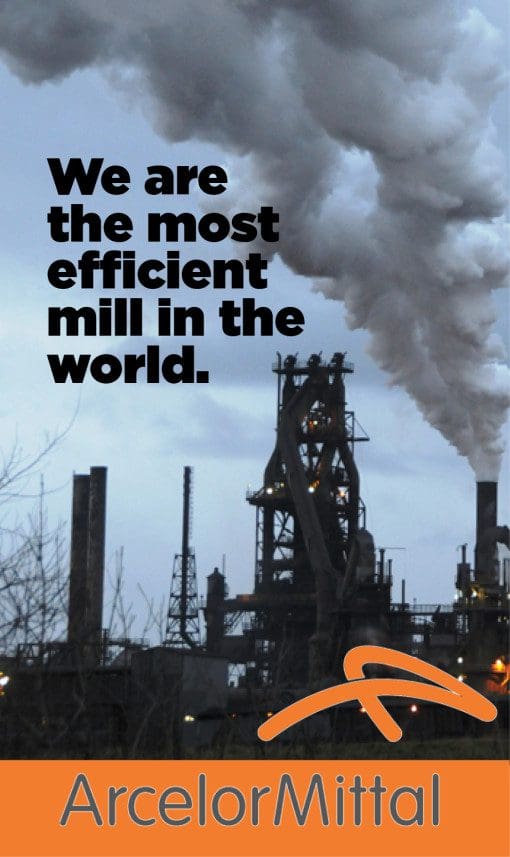
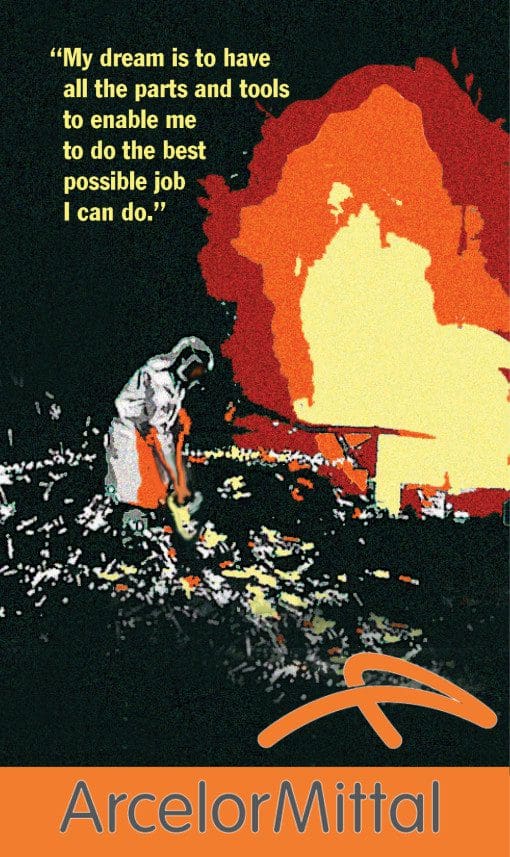
Changing the Conversation
Transforming an Industrial Culture
Abstract
In November 2001, LTV Steel in Cleveland declared bankruptcy and closed its doors, leaving 3,500 people out of work. The facility was reborn in 2002 as International Steel Group (ISG) and today is known as Mittal Steel USA-Cleveland.
Using a process called Appreciative Inquiry, this steel plant has transformed its culture and become the world’s most efficient steel producer, generating one ton of steel for less than one worker hour invested, which is double the industry average.
Appreciate Inquiry focuses people on the future by evaluating what has worked in the past, what was successful, instead of evaluating what has not worked, what has not been successful.
The success of the organization is a result of its intense focus on both the hard science (technical excellence and financial acumen) and the soft science (culture and relationships). When both hard and soft sciences are treated with equal importance, organizations can weather changing economic conditions, challenging business situations, and thrive during the tumultuous times of merger and acquisition.
1. Introduction
Arcelor Mittal is the largest producer of steel in the world. It has achieved this status by selective acquisition of steel mills. Its target companies are profitable, well-run, and technologically superior. Yet in 2005, Mittal sought out and purchased a steel mill in Cleveland, Ohio that had gone bankrupt and closed its doors forever to 3,500 employees in 2001.Today, Mittal Steel USA-Cleveland is a leading producer of steel in the United States and the most efficient steel mill in the world, based on tons of steel produced per worker hour invested. What management model has enabled this to happen and can it achieve similar results in other situations?
2. Origins of Steel
THE AGE OF BRONZE, THE AGE OF IRON, THE AGE OF STEEL
The Age of Bronze (circa 3500 BC), when man learned to turn ore into metal using heat and pressure, was a life-changing milestones in history. The creation of iron, circa 2000 BC, and the subsequent discovery of how to smelt steel in 1740 by Benjamin Huntsman, were the next steps leading to the current era. Without the ability to manufacture steel, the world as we know it would not exist.Cleveland, Ohio, the home of Mittal Steel USA-Cleveland, can trace its steel-making roots to the flat iron companies of the 1830s. Foundries of that day created rugged parts for railroads and shipping companies, including complete locomotives and heavy-duty drive shafts. In the next few decades, the industry flourished as Cleveland’s strategic location gave it an advantage for receiving deliveries of iron ore by water and of coal by rail.
HISTORY OF STEEL MAKING IN CLEVELAND, OHIO, USA
When Henry Bessemer developed the basic oxygen converter in 1850, the Age of Steel began and was one of the significant economic driving forces in Cleveland, Ohio, as well as the United States. In 1870, Cleveland’s Otis Iron and Steel Lakeside Works became the first mill in America to produce commercial-grade steel using the basic open-hearth furnace. In 1912 Otis Steel built its Riverside Works on the banks of the Cuyahoga River, followed in 1913 and 1916 by the construction of two blast furnaces by Corrigan-McKinney Steel Co.
In 1935, Corrigan-McKinney was acquired by Republic Steel Corporation. Jones & Laughlin (J&L) bought Otis in 1942. Both J&L and Republic expanded their Cleveland facilities significantly. Following World War II, more than 30,000 Clevelanders were employed in the Iron and Steel Industry. In 1960, Republic built two more basic oxygen furnaces that utilized the latest steelmaking technology.
By the 1980s, a recession, escalating operating expenses, low-cost steel imports, and the decline of the U.S. auto industry (centered just north of Cleveland in Detroit, Michigan) put the steel industry into sharp decline. Republic and J&L merged in 1984 and formed LTV Steel Corporation. In 1986, LTV filed for reorganization under Chapter 11 bankruptcy.
By 1990, LTV had bounced back and made $1.1 billion in investments including the installation of a continuous process for converting molten steel into slabs which were then processed into hot-rolled steel. Cleveland steel making was once again modern and competitive.
By 2001, another slow-down in the U.S. economy, more high costs, and increased foreign competition forced LTV into bankruptcy, again. This time it was unable to recover. The mill was shut down in November of that year.
THE FIRST STAGES OF THE REBIRTH OF STEEL IN CLEVELAND
A group of investors, International Steel Group (ISG), purchased the shuttered facility along with several other similar operations, fired up the furnaces, and partnered with the United Steel Workers Union to create a different business model that included more streamlined operations and a different way of working together.
The new working relationship developed by the union and the management of ISG essentially re-invented the American steel industry by giving workers more autonomy and decision-making authority, as well as reducing job classifications from 35 to five. The profit-sharing and production bonus plans put into place allowed employees a chance to share in the gain; they responded with record productivity that in turn produced record profits.
By 2005, ISG’s Cleveland facility had become healthy and profitable — so much so that Mittal Steel decided to purchase it. By April 2006, Mittal Steel USA-Cleveland employed 1,560 with an annual payroll of $140 million. Mittal’s effect on the total economy of Cleveland was estimated at $400 million a year, which included the creation of 3,700 jobs in local supporting companies.
CORE VALUES AND STRATEGIC DIRECTION
Mittal Steel, with its eight core values of Reliable, Confident, Innovative, Strong, Authority, Open, Expert, and Influential; and its philosophy of becoming the worldwide leader in the production of steel through growth by acquisition was a perfect fit for the ISG Cleveland group whose core values were People, Profit, and Performance. With steel producing facilities throughout the world, Mittal was now able to deliver the correct product to any client in the shortest amount of time at the least cost to the client.
RECENT CHANGES IN CORE BUSINESS
Innovation continues in the technology of steel production and migrates throughout the industry rapidly. What is new at one company soon becomes commonplace for all. Constant changes in efficiency, ownership, and deliverability also have an impact on profitability and must be attended to in order for any firm to be competitive in the marketplace.
However, competency in the hard science of steel making – the financial and the technological management – doesn’t necessarily ensure competitive advantage. It is the combination of technical excellence with the use of intentional soft sciences – how we work with each other, how we use our power, how we engage our workforce, how we create new talent – that create a sustainable model for work.
Like many other industries whose roots can be traced back a century or more, American steel culture could be accurately described originally as autocratic, entrenched, highly unionized, and parent-child in its relationships between management and workers.
Given the opportunity to rebirth steel making in Cleveland following bankruptcy, ISG focused on creating a culture that embraced adult-adult relationships, forged high trust, and shared power. It developed flat organizational structures and engaged employees in reinventing their work.
3.History of the Management Model
Under the LTV banner, the Cleveland facility was an autocratic, bureaucratic, highly unionized, multi-layered company with a high level of parent-child interactions, a high rate of grievances, low risk taking, and a compensation system based on seniority. Something needed to be done to change that culture if LTV was to survive. But no significant change occurred. Ultimately, LTV went bankrupt and all its employees lost their jobs.
When the Cleveland facility was reborn as ISG, John Mang was brought in as general manager with a vision to evolve the existing culture. He tasked a cross-functional steering team to define the culture in terms of values, behaviors, and competencies. With no idea what they would end up with, the steering team started by convening individuals in supervisory and leadership positions for focused conversations.
This first set of overall cultural forums resulted in the creation of a two-year cycle of additional cultural forums targeting supervision and leadership. The hallmarks of these forums were that individuals were put in cross-functional groups and participated in learning dialogs with relevant mill-centric content. Team members were asked to read books that reinforced the content, teach learned competencies to others, and in general apply what they had learned. In two years, five forums with 250 individuals in each were held. The forums covered the topics of leadership and change; building, breaking, and repairing trust; resolving conflict; sharing information; and developing others. The initial sessions were designed and lead by an outside facilitator, Leslie Yerkes. As the participants grew in their ownership of the process and their role in it, the forums were facilitated by volunteers from the group who were trained by the outside facilitator to lead them. Ultimately, the participants were able to drive their own content and deliver it themselves.
After two and a half years of meeting in forums, someone from the steering team (which still meets monthly under the Mittal ownership) asked two good questions: How do we know if we’ve positively affected the culture? How can we push the content of these conversations deeper into the organization?
These two simple questions launched an initiative that involved every employee in conversations focusing on the company’s strengths as a platform on which to build future success.
Once the steering team breached the questions, consultant/facilitator Leslie Yerkes proposed a methodology that was in alignment with the ISG culture and its goals. The methodology was called Appreciative Inquiry.
“Given the radical changes in the competitive environment, the old model (of strategic planning) is not up to the task of producing the types of strategy and strategic plans that will propel businesses forward in the rapidly evolving future. What is needed is not another strategic planning model, but a strategic thinking framework and process to quickly and smoothly guide an organization through this complex process while engaging the whole system.”
— Jacqueline Stavros, David Cooperrider, D. Lynn Malloy
“Strategic Inquiry>Appreciative Intent: Inspiration to SOAR – A new Framework for Strategic Planning, “ AiPractitioner, November 2003, p. 11.
APPRECIATIVE INQUIRY DEFINED
Appreciative Inquire is a collaborative search to identify and understand the organization’s strengths, potentials, and greatest opportunities in order to stimulate co-construction of the ideal future. Its methodology works from these principles:
- To envision the future, learn from the best of our past.
- Celebrate and exploit those strengths that give life to our greatest work.
- Create bold, positive images of our future to drive organizational priorities.
- Work together on ideas that most attract us.
Appreciative Inquiry, developed by David L. Cooperrider, Ph.D. at Case Western Reserve University, Cleveland, Ohio, USA, provides an alternative framework to action research and to problem solving. Traditional methodologies of organizational change approach things as problems to be solved and view incrementalism as the norm. Appreciative Inquiry approaches organizations as centers of relationships connected to infinite capacity and strengths. Simply stated, Appreciative Inquiry changes the focus and the questions from deficit to abundance; from what’s not working to what is.
The focus of Appreciative Inquiry is to help individuals discover their positive core through conversation. Its intention is to leverage strengths to achieve their preferred future. The major premise of Appreciative Inquiry is that individuals, groups, and organizations move in the direction of their conversations. When the focus is on what does not work, this is where the person, group, or organization will stay. When the focus is on strengths, then growth is the result.
APPRECIATIVE INQUIRY AND CULTURAL TRANSFORMATION
Appreciative Inquiry may be used in dialogs about team building, innovation, collaboration, safety, service, quality, talent, and all key forces of an organization. Appreciative Inquiry dialog questions might ask: What do we value the most in this organization? How do we want to be with each other? What makes us unique? What are we most passionate about? What runs our success engine?
WHO WAS INVOLVED?
During the summer of 2005, more than 1,400 employees participated in one-on-one interviews, contributing their aspirations and voices to crafting the future of Mittal Steel USA-Cleveland. This process culminated in an Appreciative Inquiry Summit held in Cleveland in May, 2006. More than 200 (individuals representing all functions, shifts, labor, management, sister organizations, corporate leadership, vendors, customers, and community partners) gathered together for a day to review the aspirations of the workforce and together forge a vision for the future of the Cleveland facility. As a result, 11 focus areas were identified and are being activated by cross-functional teams.
4. The management model described
PROBLEMS ADDRESSED USING THE MODEL
Because Appreciative Inquiry is a solution-based model and not a problem-based model, it was congruent with the cultural conversations that preceded its adoption. Appreciative Inquiry looks at positive outcomes and develops ways to improve what is already working. Interestingly, when plans to improve positive results are implemented, adjacent, seemingly unconnected, negative situations get pulled along under the heading of “all boats rise with the tide.”
HOW DOES THE MODEL SUPPORT THE CORE STRATEGY AND CORPORATE PHILOSOPHY?
When models of organizational change are congruent with corporate philosophies, outcomes expand from arithmetic to geometric. Appreciative Inquiry, with its focus on positive outcomes, meshes with the Cleveland facility’s belief in employee engagement. Thus, the Cleveland facility’s outcomes soon moved the company Phoenix-like from bankruptcy to being the most efficient producer of steel in America: 1 ton per worker hour.
HOW ARE STRATEGIC MEANS DEPLOYED AND HOW IS ALIGNMENT ENSURED?
The process of Appreciative Inquiry follows the 4-D Cycle.
DISCOVERY PHASE
Through the process of interviews, the Discovery Phase involves answering the question “What gives life?” It was the goal of the Cleveland facility to engage the entire workforce in this conversation. During summer 2005, co-workers interviewed co-workers to amass more than 1400 completed interviews. The questions used were open-ended, affirmative, and sought out stories of strength. Alignment was ensured because the power of Appreciative Inquiry stories is that they stick like glue; make information easier to remember because they use the whole brain; build identities; foster relationships; become a medium for conveying values and vision; move the internal dialog of the system; and create a sense of cooperative potential. Sample questions include:
Recall a time at work that made you feel proud, fulfilled, or happy. Tell a story about that experience.
Tell a story about a time when you felt the sense of ownership with respect to your job or a project. What key factors gave life to this experience and made it memorable for you?
Tell a story about a time when you stepped out of your normal role and took the initiative to do something that was needed. What were the key factors that made that happen?
DREAM PHASE
The Dream Phase focuses on “What might be;” The Preferred Future; or Envisioning Results. Dreaming occurs when the data from the interviews is themed and presented to a convened group of stakeholders. For The Cleveland Summit, 200 individuals who represented the complete system were invited to engage in understanding the stories, aspirations, and ideas voiced by the interviews that were produced by the Discovery Phase. These ideas and aspirations became visions for the future and mapped out the best ideas for change.
DESIGN PHASE, DESTINY PHASE
The whole system, representing all functions of steel production and administration, sister organizations, customers, and vendors, worked the visions through the Design and Destiny Phases to form new change teams, develop aspiration statements, create action plans, and commit to moving forward.
OUTCOME OF 4-D CYCLE
As a result of the 4-D Cycle, 11 action teams were formed and crafted the following aspirations:
- Union and Management Partner Communication Team
We are partners in creating a world-class organization. To sustain the lifeblood that is our culture, we must have open, honest communication. We acknowledge all viewpoints and encourage input from everyone. This is the formula of our success. - Equipment 10-year Plan Team
We ensure the long-term survival and competitiveness of our facilities by establishing 4- and 10-year plans for equipment needs, modifications, and upgrades. We will ensure high utilization, maximum profits, and consistently high quality to our customers. - Safety Team
Mittal Steel Cleveland is an organization that is injury free. All employees understand that safety is our No. 1 priority. We are all committed to taking action to correct safety issues. We take ownership in our injury-free environment and culture. - Vendor of Choice Team
We are the vendor of choice. We recognize and believe that the customer is entitled to excellent quality, service, delivery, accurate information, and that we always do what we say we will do. - Shared Compensation and Reward Team
We aspire to create a balanced compensation package for all Mittal Steel USA employees. We believe this program is the backbone of Mittal Steel culture. - Wellness Program Team
We resolve to improve the health and wellness of our workforce by education, participation, training, and nutrition. The result will be a healthier workforce. - People First Team
We are the people. We care, we share, we give, we dream, we accomplish, we succeed, we are listened to, we are recognized. Together, there is nothing we cannot do. - Lean-6 Sigma Team
We affirm that the implementation of Lean-6 Sigma is a value-added philosophy that is supported by all levels of management and throughout all departments. All Mittal Steel USA-Cleveland employees are educated and embrace the concepts of Lean-6 Sigma. All incorporate the concepts in their daily work. - Education and Learning Team
We resolve to create a platform that will allow technical and cultural education to thrive and evolve at Mittal Steel Cleveland. We will address the core issues of bench-strength, passing on of process, knowledge, and experience, and the enhancement of technical skills. - Recruiting Team
We will ensure seamless knowledge transfer. We seek authority to temporarily over-staff through a bench-strength program. To populate the bench-strength program, we are partnering with targeted recruitment sources such as the military, trade unions, and educational facilities. - Outreach Team
We affirm by all our stakeholders, customers, suppliers, neighbors, community leaders, government leaders, employees, and employees’ families that Mittal Steel USA Cleveland is the most admired company.
The process of Appreciative Inquiry creates engagement, fosters understanding, leverages strengths, and infuses energy. It is a democratic process that allows people to vote with their feet and move in the direction of their dreams. And in the process of the process, the culture of the organization is transformed.
Cultural change doesn’t occur as a result of programs of the month, quick fixes, silver bullets, or turnkey operations. It is, instead, a process journey. The result of the first Appreciative Inquiry is not only the creation of these 11 action teams, but it is also the creation of a second, system-wide Appreciative Inquiry Summit; this one focused on safety.
Clearly, Mittal Steel USA Cleveland has learned to leverage the power of collective action.
5. Deployment and experiences with the management model
WHICH ROADBLOCKS ARE EXPERIENCED WHILE IMPLEMENTING THIS MODEL?
Cultures that do not believe in abundance or are not enlightened, and empowered may not do well with Appreciative Inquiry. The mindset behind AI is: “If you believe it, you will see it.” The mindset of many cultures is: “I’ll believe it when I see it.” In organizations such as that, Appreciate Inquiry could have a hard time being accepted, implemented, and allowed to foster growth. Because of the work of the leadership of the Cleveland facility beginning under the ISG banner, the culture of the company was such that AI was a perfect match and virtually no roadblocks existed.
RESULTS ACHIEVED
Looking at the metrics, it is apparent that Mittal Steel USA-Cleveland has made significant improvements and is consistently achieving results above industry norms. What differentiates Mittal Steel USA-Cleveland from other US steel producers is its focus on soft science and cultural conversations. It is our contention that these impressive outcomes are the direct result of that differentiated focus.
- Sales tripled between 2002 and 2006
- Profits rose 270 percent from 2002 to 2006
- Inventory turnover increased from 9.2 turns in 2002 to 13.7 turns in 2006
- Mittal Steel USA-Cleveland is the most efficient steel mill in the world, based on tons of steel produced per worker hour: 1 ton per hour.
- Mittal Steel is the largest steel producer in the United States
- Grievances reduced from 5000 in 2000 to 2 in 2006
- Share value from $28 in 2000 to $41 in 2006
- Tons shipped from 1.5 million in 2002 to 2.5 million in 2006
- Employee headcount from 3,500 in 2000 to 1,600 in 2006
- Air quality is cleaner in 2006 than in 2002 when the mill was closed for four months
- Mittal Steel USA and Cuyahoga River Remedial Action Plan to nurture and protect plants and fish with green bulkheads.
- 2006 winner of Pillar Award for Community Service in Northeast Ohio
- 2006 winner of Good Samaritan Award for workforce community involvement
- Member of international company that is the world leader in steel production
- 2006 Mittal Steel merged with Arcelor to become Arcelor Mittal
Once the location of bankrupt LTV Steel, Cleveland, Ohio is now the home to the most efficient, integrated steel mill in the world.
Lessons Learned
- Involve the whole system
- Begin with questions
- Treat the what and how as being equal in importance
- Understand/process and not a program
- Everyone’s starting point is different
- Not formulaic but a process of discovery
- Organizations move in the direction of their conversations
- Focus your energies on those who embrace and support the change.
- Don’t be diverted by those who do not
- Don’t be afraid to have the difficult conversations
- What goes unaddressed does not go away
- Cultures are fragile
- It’s something you’ll always have to work on
- There are no experts; no one is more important than another
- No idea is inherently better than another
- There are no quick fixes, no silver bullets
- No one considers this a program being applied like a bandage to a wound
- They all realize it’s a process that creates discovery along the way
- Focus on both the hard and soft sciences with equal intention
Perhaps no greater lesson learned is that management and union can successfully cooperate in the creation of new way of working together toward their common Preferred Future. Terry Fedor, general manager said, “The AI Summit enabled us to create a roadmap to our future. It helped us envision what we want our facility to be and what we want to accomplish, both as individuals and as a cohesive team.”
Mark Granakis, president of United Steelworkers, Local 979, said, “It is no surprise that our Cleveland organization is using this tool to further develop our culture. The steelworkers in Cleveland have always been on the leading edge of change and continuous improvement. Our new model for labor-management relations has revolutionized the way business is done in the steel industry today. You can count on the people of Mittal Steel USA-Cleveland to continue leading the way forward.”
6. Future Opportunities
Because new challenges in business are constant, working to improve corporate culture is never-ending. Mittal Steel USA-Cleveland is focused on continuing its tradition of making great steel safely and profitably. Management is conscious that 55 percent of its workforce will be retiring in the next five years taking with them some of the culture norms. As they develop new workers, they ask themselves:
How can we develop their commitment to our culture?
How can we not allow the stresses of a very rapidly changing marketplace and economic conditions to subtlety erode the effectiveness of our culture?
As Arcelor Mittal continues continue to grow and more mergers and acquisitions occur, their most important concern continues to be: How do we ensure the alignment of cultures?
By Members of the Mittal Steel USA-Cleveland
Leadership Development Team
Bill Bush, Bill Chambers, Diana Conway, Jeff Drummond, Sam Dunner, Terry Fedor, Ron Fry, PhD (consultant), Dave Grinnell, Dan Hardman, Ralph Myers, Paul Warthing, Leslie Yerkes (consultant), Phil Zeppo.
Our goal is to exceed your expectations. In the unlikely event you feel that the gains are not commensurate with the time and resources expended, we will continue the project at no further cost until you are completely satisfied. We offer this guarantee because we don’t want you to worry about our work when you have real issues with which to contend.

